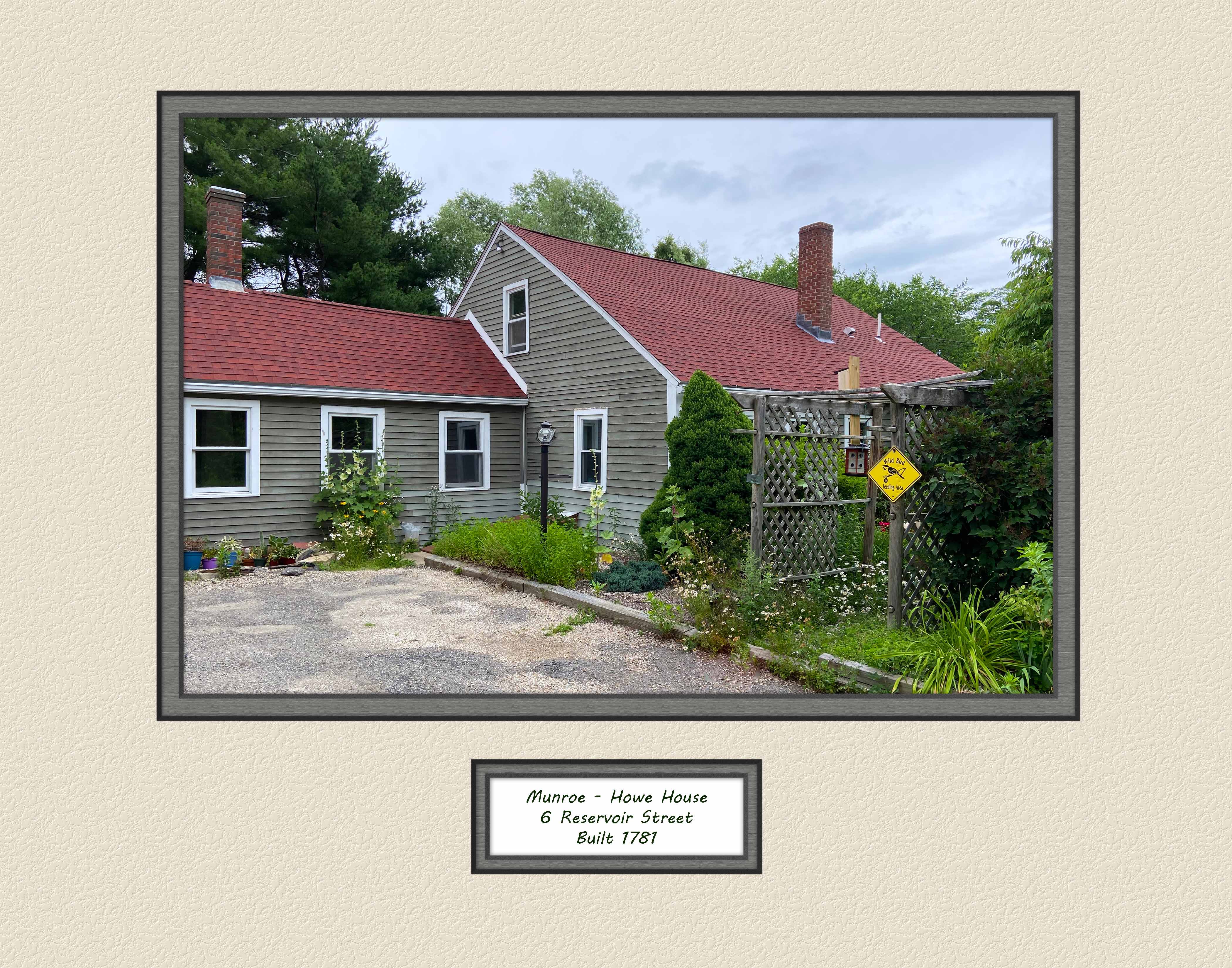239 Crawford Street
 The 1830 atlas lists Silas Bruce as the owner of this farmhouse, which he may have built. He was active in town politics as selectman 1801 - 1805 and assessor 1834 - 1835.
The 1830 atlas lists Silas Bruce as the owner of this farmhouse, which he may have built. He was active in town politics as selectman 1801 - 1805 and assessor 1834 - 1835.
453 Main Street
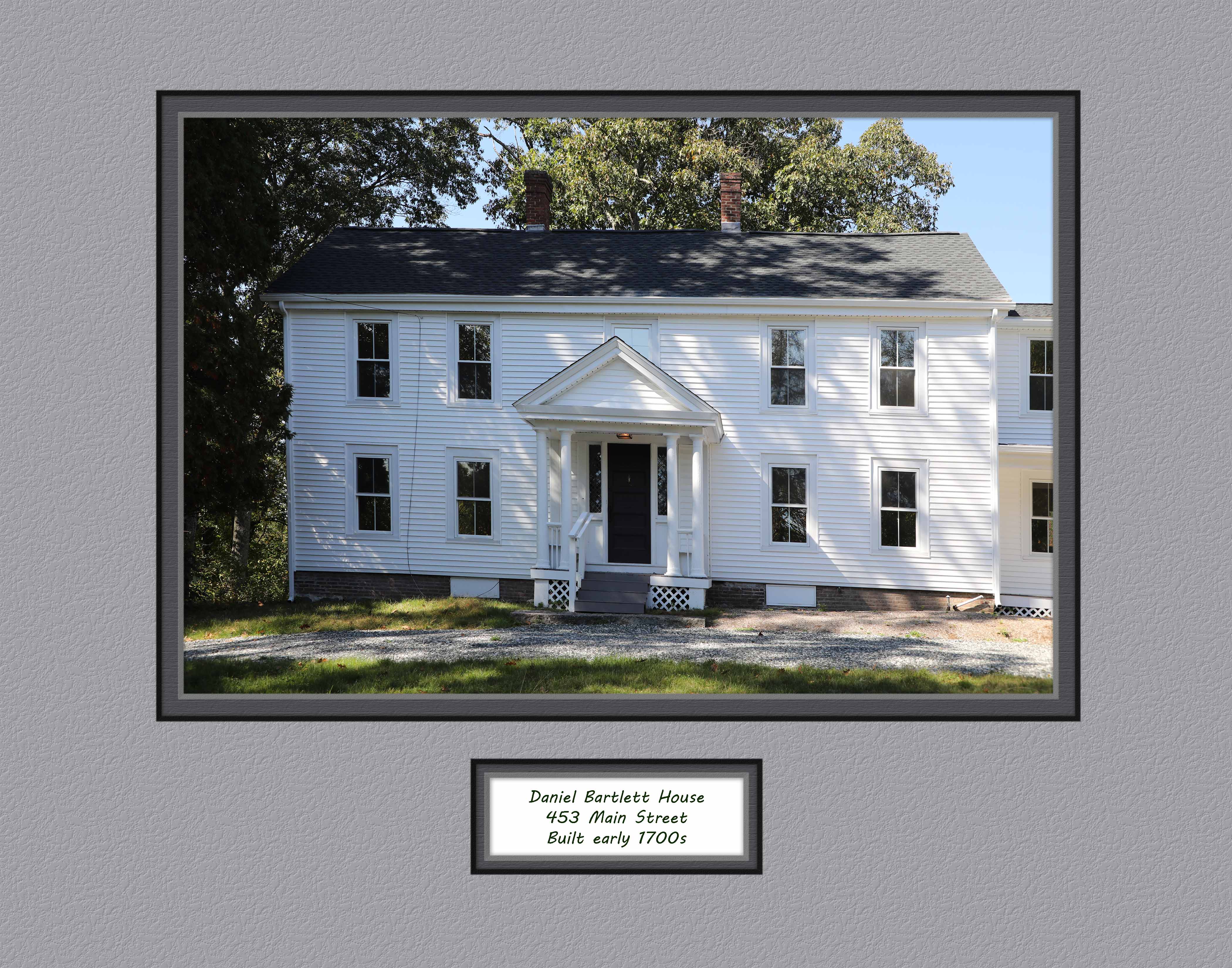 Believed to have been built for Daniel Bartlet, this house passed to his son Jotham in 1748, who worked on Northborough's First Church in 1745. By 1830, it was owned by Deacon Jonas Bartlett, a mill owner, who retained the property until at least 1870.
Believed to have been built for Daniel Bartlet, this house passed to his son Jotham in 1748, who worked on Northborough's First Church in 1745. By 1830, it was owned by Deacon Jonas Bartlett, a mill owner, who retained the property until at least 1870.
216 Newton Street
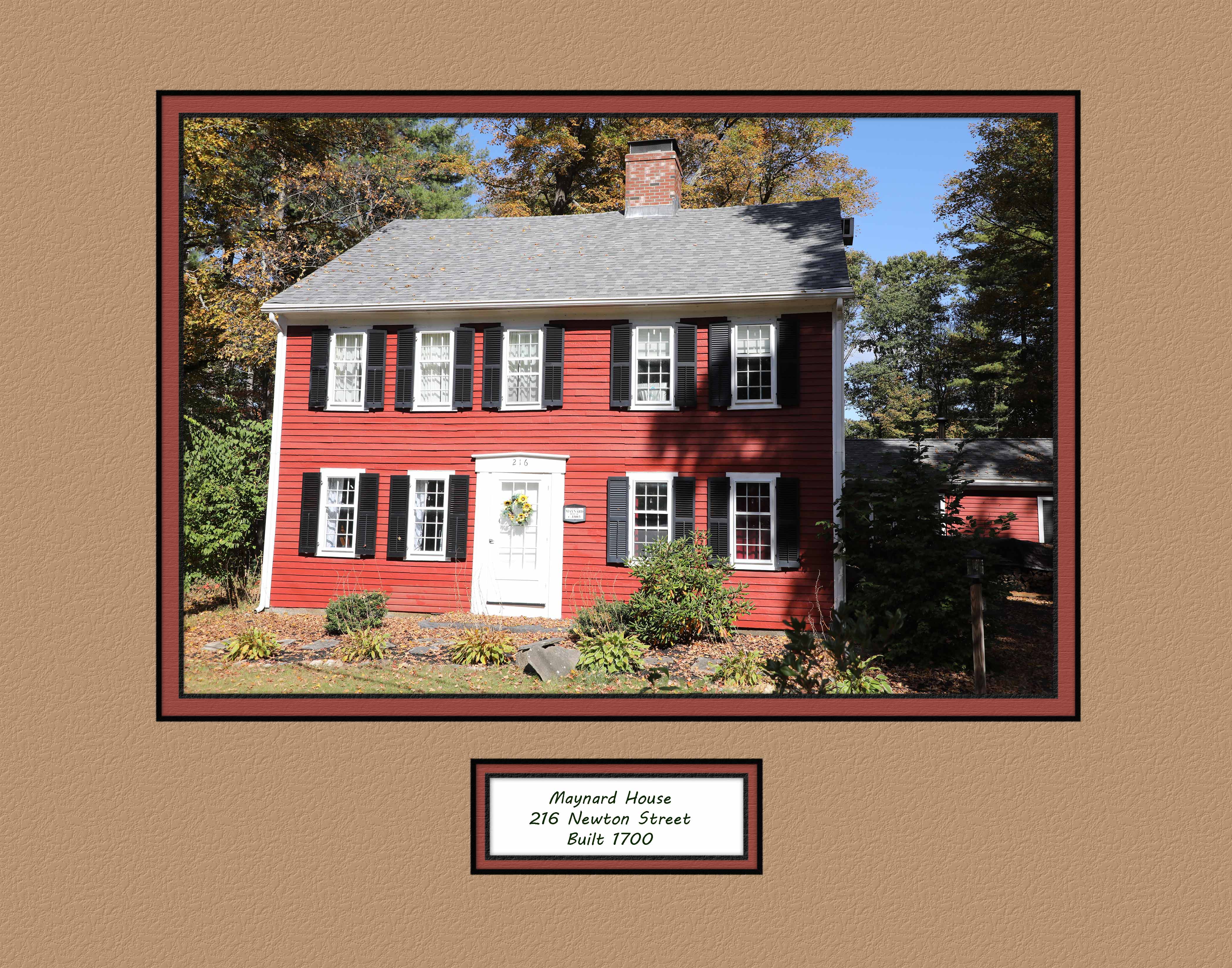 Owned in 1830 by Northborough assessor T. Maynard, this house was constructed in the early 1700s and was one of the first few structures there.
Owned in 1830 by Northborough assessor T. Maynard, this house was constructed in the early 1700s and was one of the first few structures there.
465 West Main Street
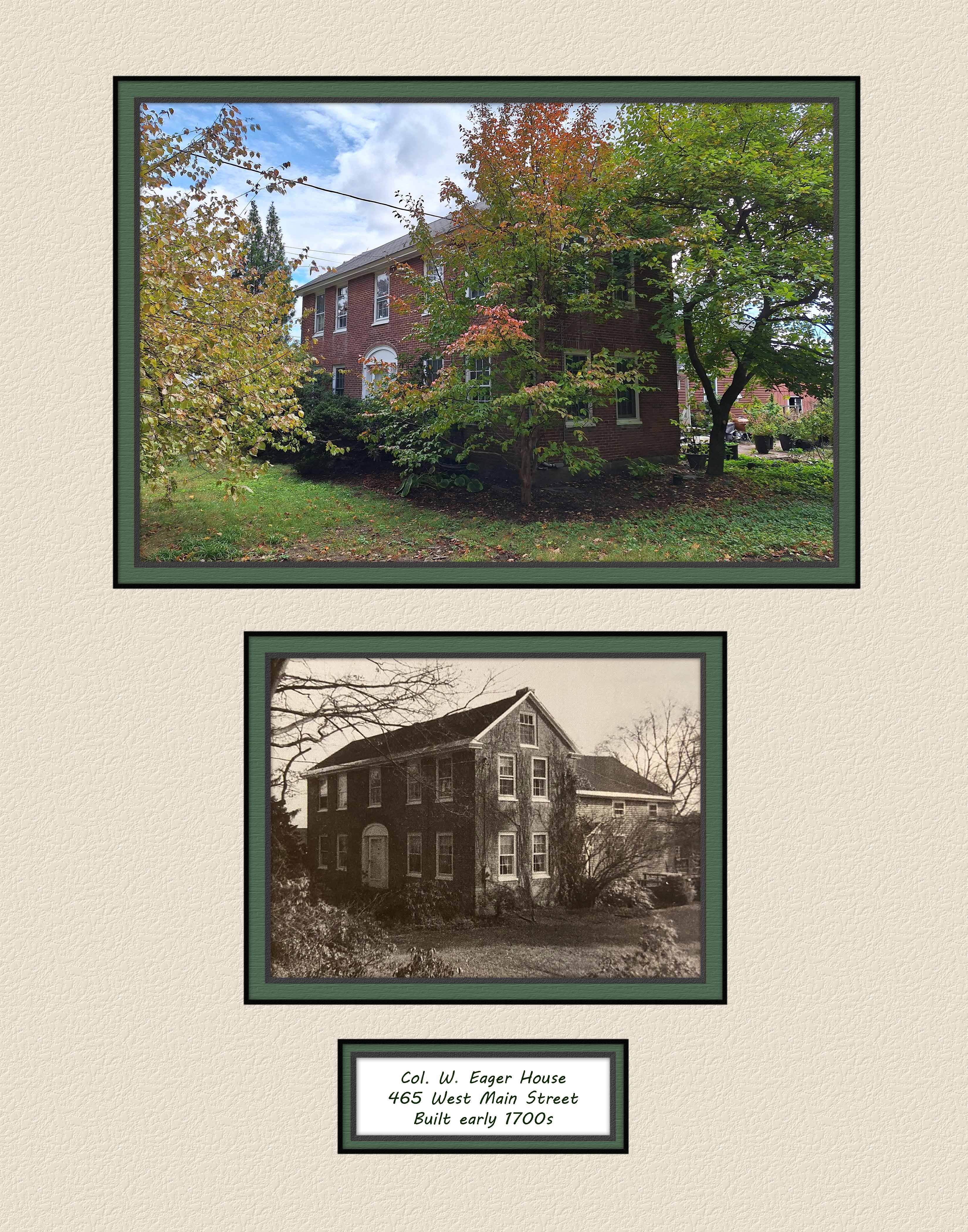 One of the oldest houses, built in 1711, was home to Bezaleel Eager by 1830. He was a veteran of both the French and Indian War and the Revolution where he served as a captain under Gen. Artemas Ward.
One of the oldest houses, built in 1711, was home to Bezaleel Eager by 1830. He was a veteran of both the French and Indian War and the Revolution where he served as a captain under Gen. Artemas Ward.
302 Church Street
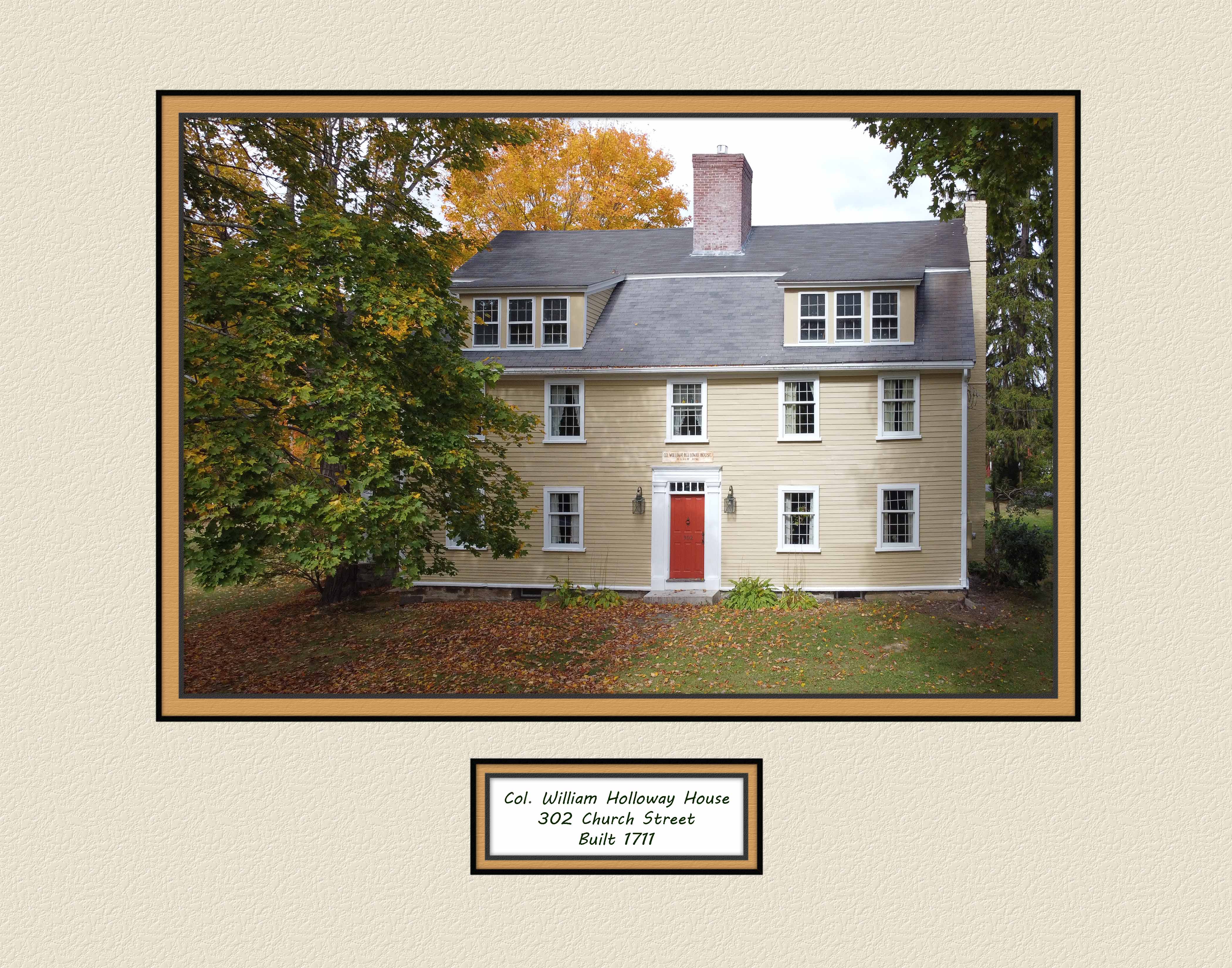 The Lt. William Holloway house was believed to be built in 1711. In 1744, the first precinct meeting was held here to support the split from Westborough. Holloway operated a saw and corn mill along Cold Harbor Brook.
The Lt. William Holloway house was believed to be built in 1711. In 1744, the first precinct meeting was held here to support the split from Westborough. Holloway operated a saw and corn mill along Cold Harbor Brook.
50 Cherry Street
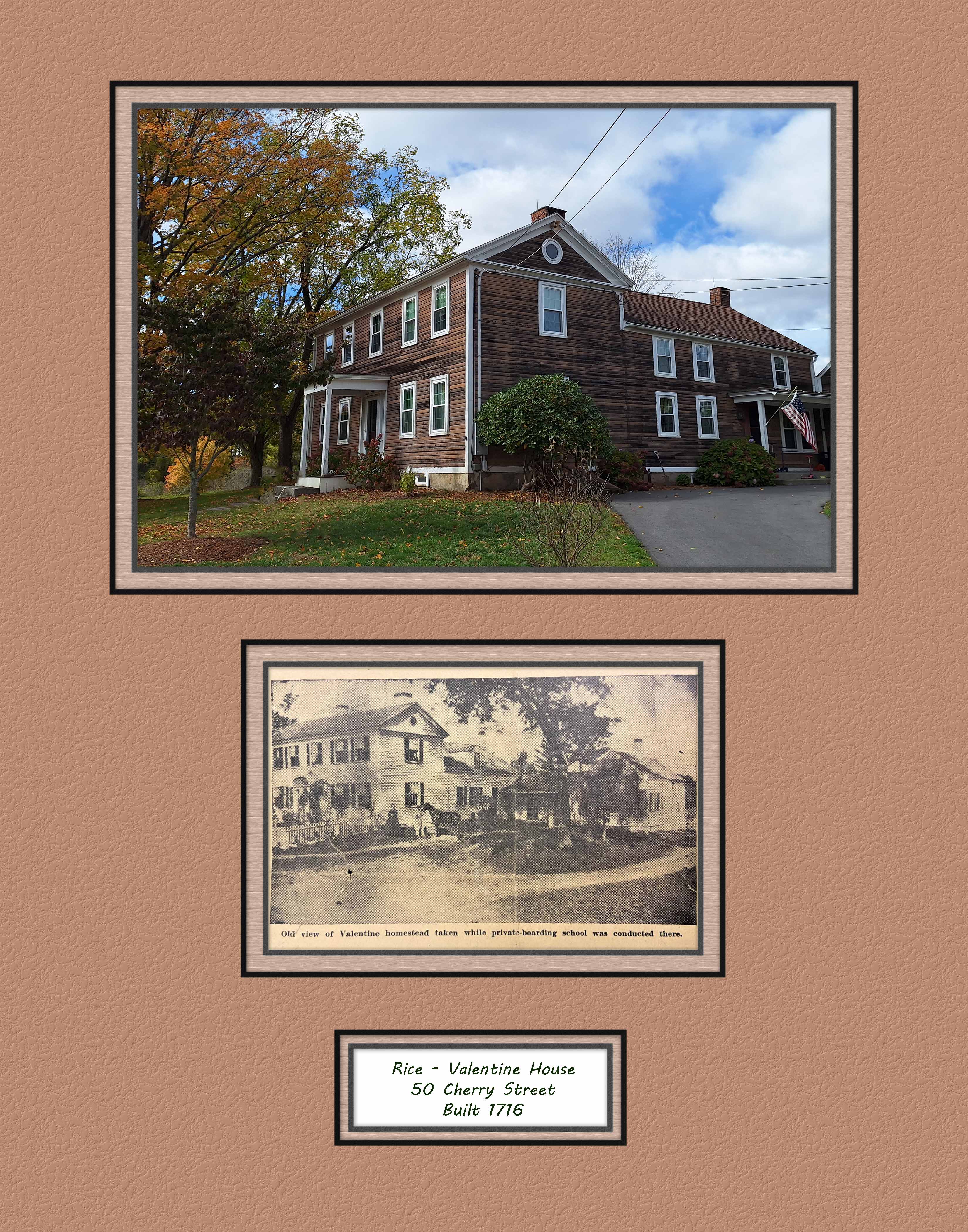 This house has origins dating back to 1716, with S. Rice as the owner on the 1830 map. It was acquired by Elmer Valentine in 1838 and he operated the Valentine Boarding School there. He was well known for teaching his penmenship skills.
This house has origins dating back to 1716, with S. Rice as the owner on the 1830 map. It was acquired by Elmer Valentine in 1838 and he operated the Valentine Boarding School there. He was well known for teaching his penmenship skills.
292 Crawford Street
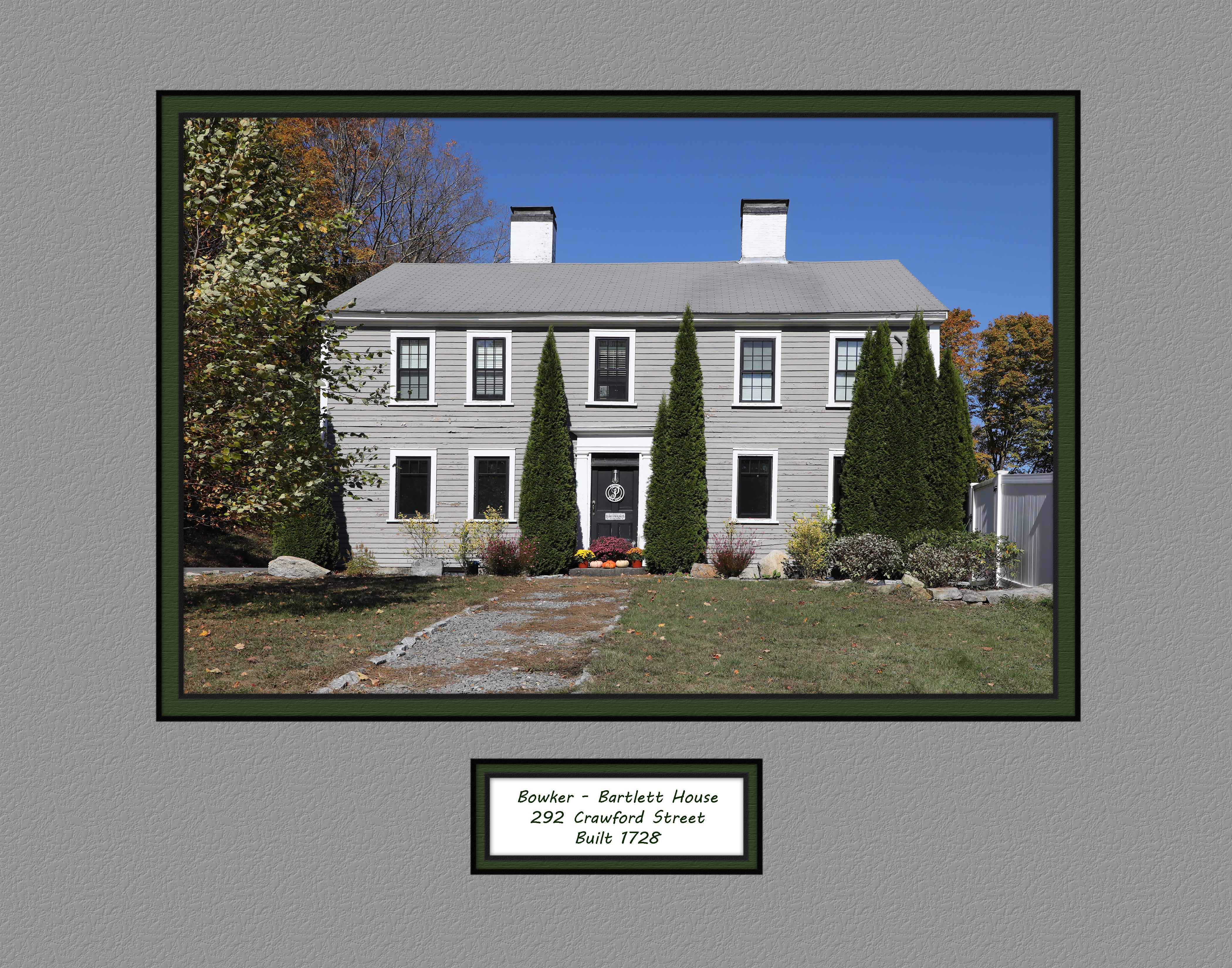 This house is recorded as being built in 1716. Owned by Mrs. Bartlett in 1830, the Bartlett family had deep Northborough roots, with three members serving in the Revolutionary War.
This house is recorded as being built in 1716. Owned by Mrs. Bartlett in 1830, the Bartlett family had deep Northborough roots, with three members serving in the Revolutionary War.
660 Howard Street
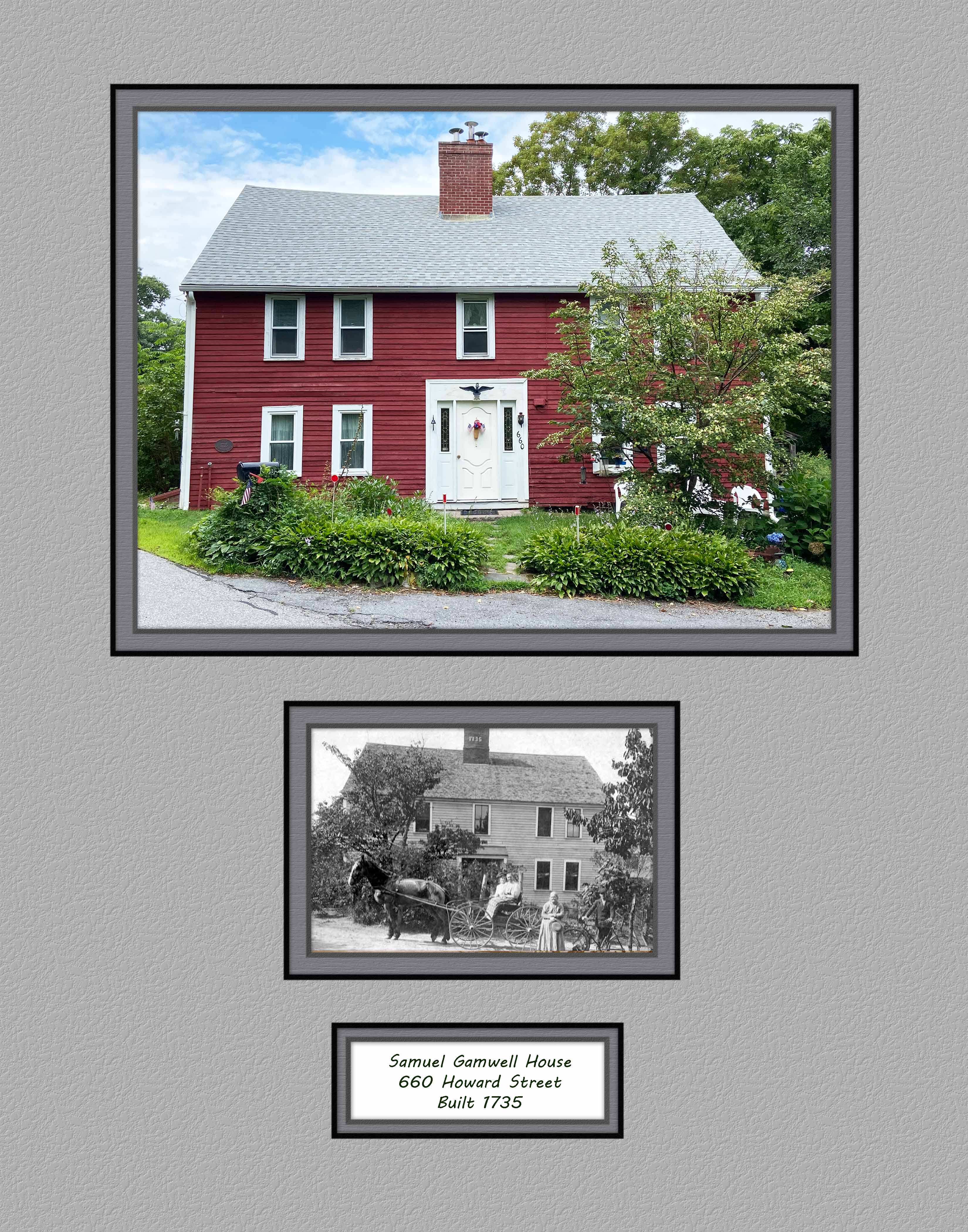 Built around 1735 by Samuel Gamwell, this is one of the oldest homes on Howard Street. By 1830, it was owned by Captain Prentice Keyes, whose family was active in town affairs, before passing to G. Flagg in 1855 and K. Currier by 1870. Currently it is owned by the Bennett family.
Built around 1735 by Samuel Gamwell, this is one of the oldest homes on Howard Street. By 1830, it was owned by Captain Prentice Keyes, whose family was active in town affairs, before passing to G. Flagg in 1855 and K. Currier by 1870. Currently it is owned by the Bennett family.
359 Newton Street
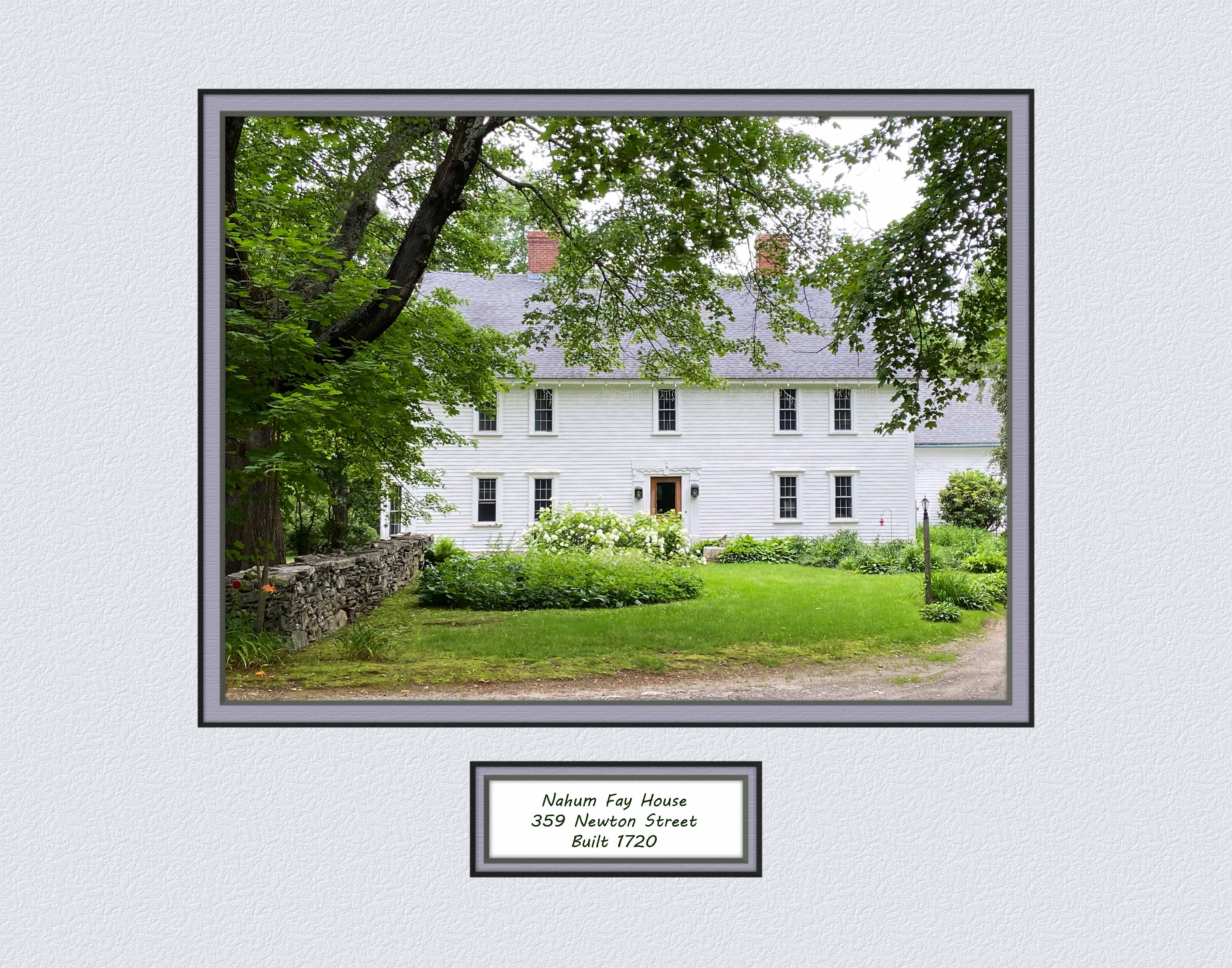 The house at 359 Newton Street, built around 1720, was later owned by Nahum Fay. Fay played a key role in establishing the Evangelical Congregational Church in 1832.
The house at 359 Newton Street, built around 1720, was later owned by Nahum Fay. Fay played a key role in establishing the Evangelical Congregational Church in 1832.
500 Green Street
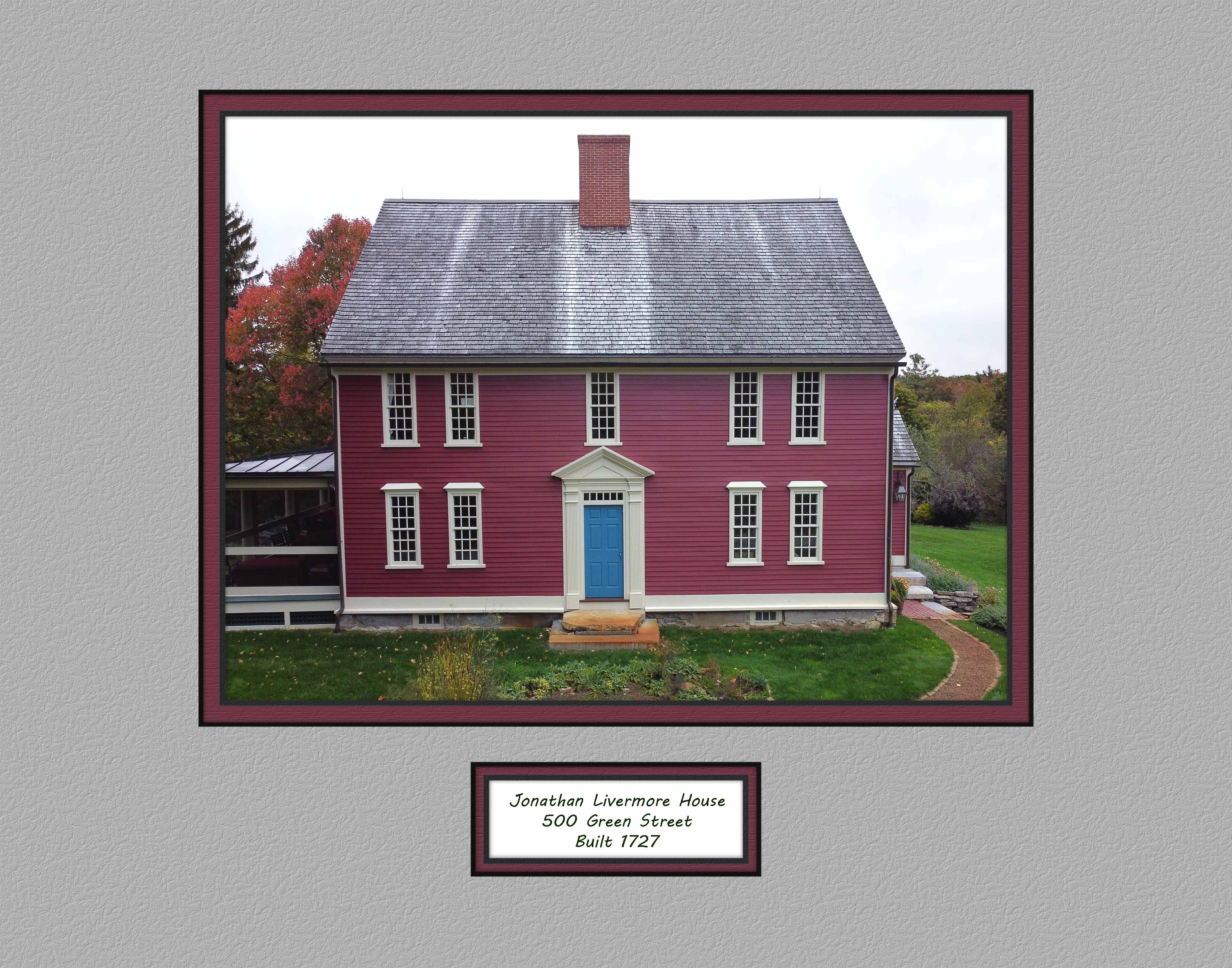 This house was built by Deacon Jonathan Livermore in 1727. Livermore became deacon in 1746 when Northborough organized the church. He served as Northborough's first town clerk, an assessor, and a representative to the state convention.
This house was built by Deacon Jonathan Livermore in 1727. Livermore became deacon in 1746 when Northborough organized the church. He served as Northborough's first town clerk, an assessor, and a representative to the state convention.
6 Lancaster Drive
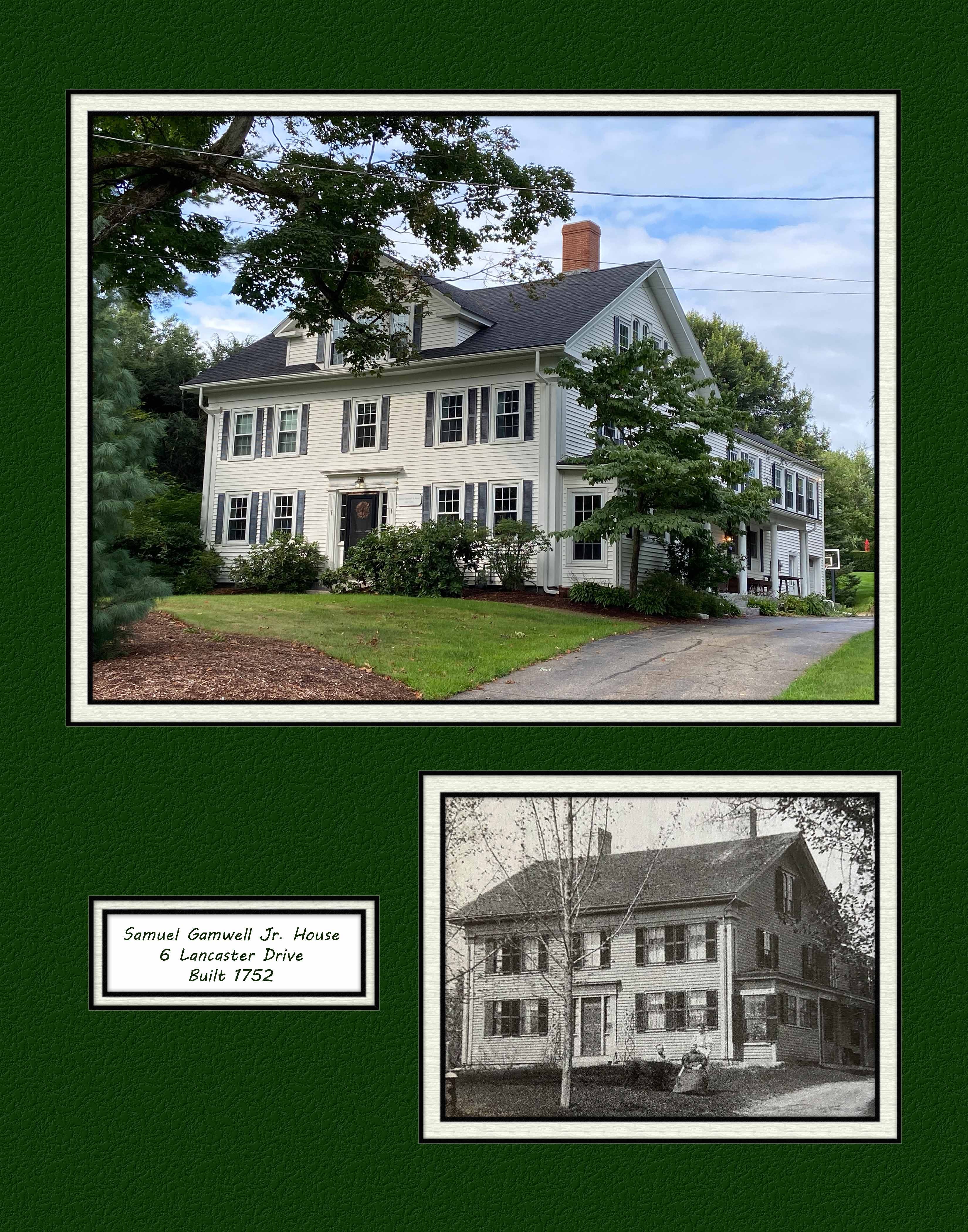 Built in 1752 by Samuel Gamwell Jr, this house first appeared on the 1855 atlas, when its address was on Whitney Street, owned by T. Holbrook. By 1879, ownership of the property transferred to J. F. Corey and later to Walter Carlson in the 1950s.
Built in 1752 by Samuel Gamwell Jr, this house first appeared on the 1855 atlas, when its address was on Whitney Street, owned by T. Holbrook. By 1879, ownership of the property transferred to J. F. Corey and later to Walter Carlson in the 1950s.
405 Davis Street
 This house was likely built around 1730. Phineas Davis, its owner at the time, was active in the leather industry and, along with his brothers, contributed to Northborough's first cotton factory in 1814.
This house was likely built around 1730. Phineas Davis, its owner at the time, was active in the leather industry and, along with his brothers, contributed to Northborough's first cotton factory in 1814.
38 Main Street
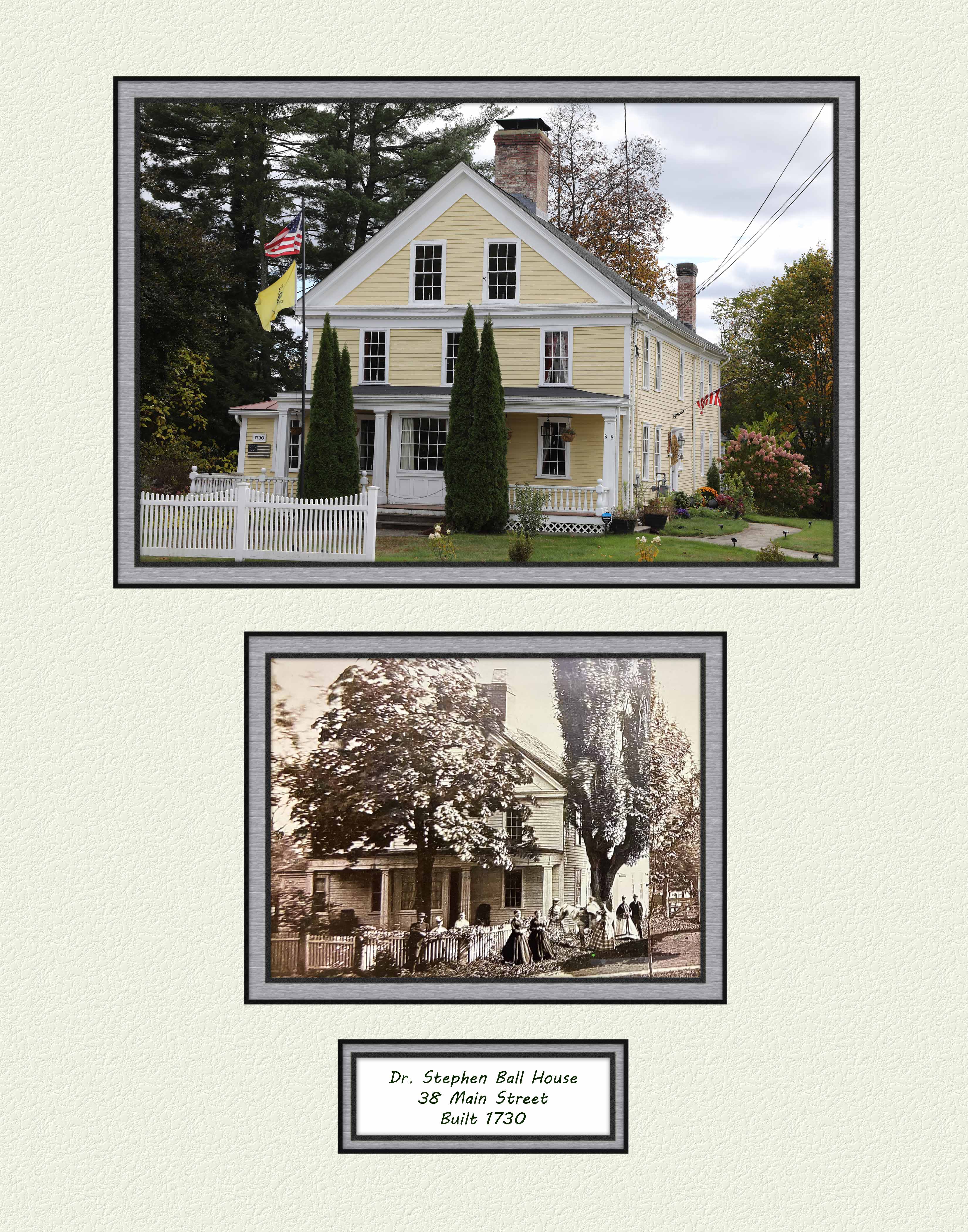 The house at 38 Main Street was built in 1730 as the home of a sea captain. Later it was home to several generations of the Ball family. Dr. Stephen Ball, an early physician and public servant, died here in 1798. His son took over until his death in 1850 after being a doctor for 54 years. His apothecary store was located next door where the library is now.
The house at 38 Main Street was built in 1730 as the home of a sea captain. Later it was home to several generations of the Ball family. Dr. Stephen Ball, an early physician and public servant, died here in 1798. His son took over until his death in 1850 after being a doctor for 54 years. His apothecary store was located next door where the library is now.
97 Main Street
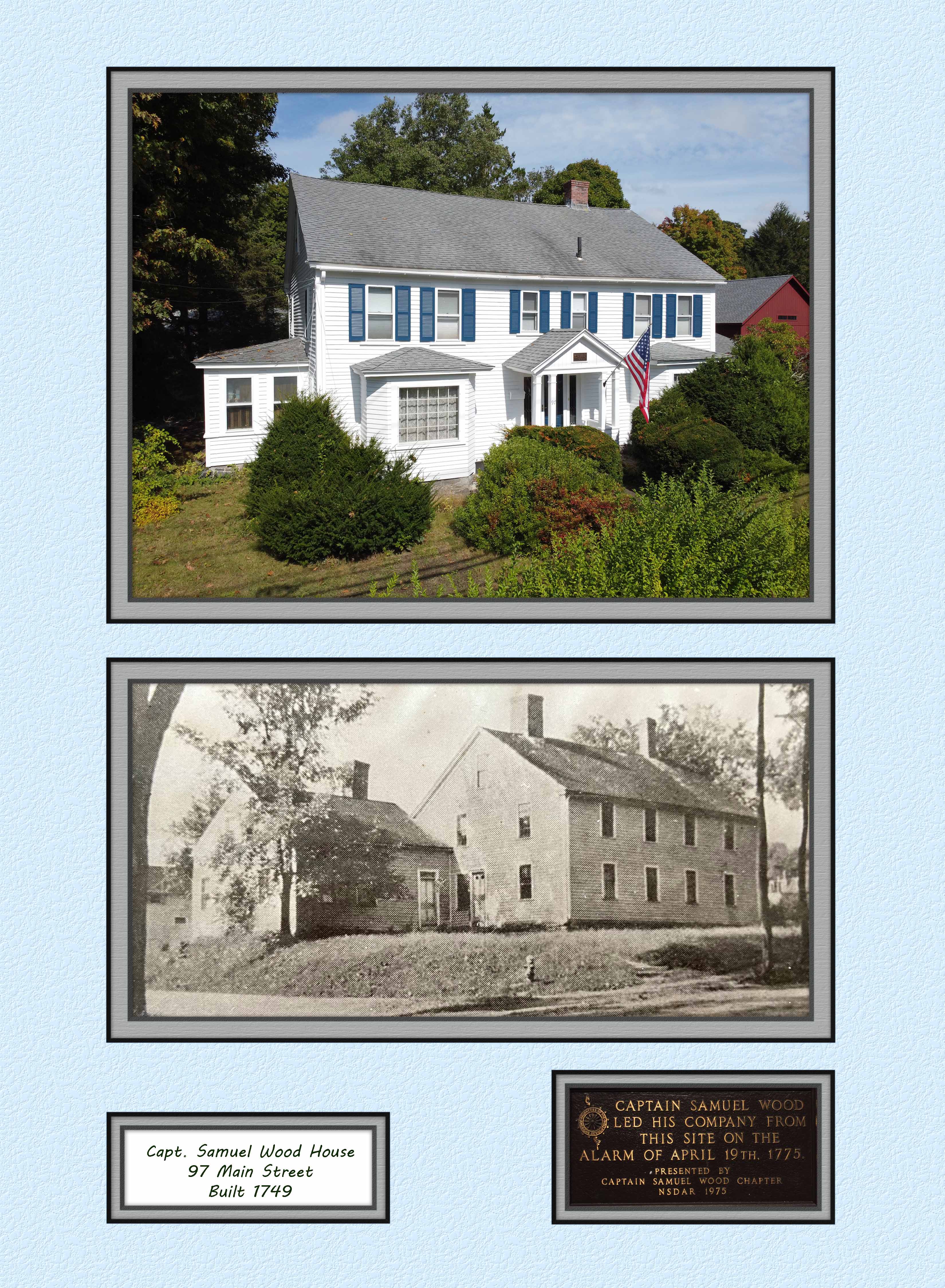 This house was built in 1749 by Capt. Samuel Wood, Sr., who established a mill on the Assabet River. Samuel, Jr. became captain of the local militia, and led our minutemen to Lexington and Concord on April 19, 1775. In June of that year, he fought in the Battle of Bunker Hill. The house was owned in the early 1900s by inventor/businessman Thomas Blair, who made significant renovations in 1918.
This house was built in 1749 by Capt. Samuel Wood, Sr., who established a mill on the Assabet River. Samuel, Jr. became captain of the local militia, and led our minutemen to Lexington and Concord on April 19, 1775. In June of that year, he fought in the Battle of Bunker Hill. The house was owned in the early 1900s by inventor/businessman Thomas Blair, who made significant renovations in 1918.
119 Washburn Street
 Built in 1752 by William Babcock, the house was later sold to David Mahan in 1803, whose family had come from Northern Ireland. Mahan changed the four room house to this model pictured. Ownership passed to A. Warren in 1855 and later to T. P. Haskell who fought in WWI.
Built in 1752 by William Babcock, the house was later sold to David Mahan in 1803, whose family had come from Northern Ireland. Mahan changed the four room house to this model pictured. Ownership passed to A. Warren in 1855 and later to T. P. Haskell who fought in WWI.
206 South Street
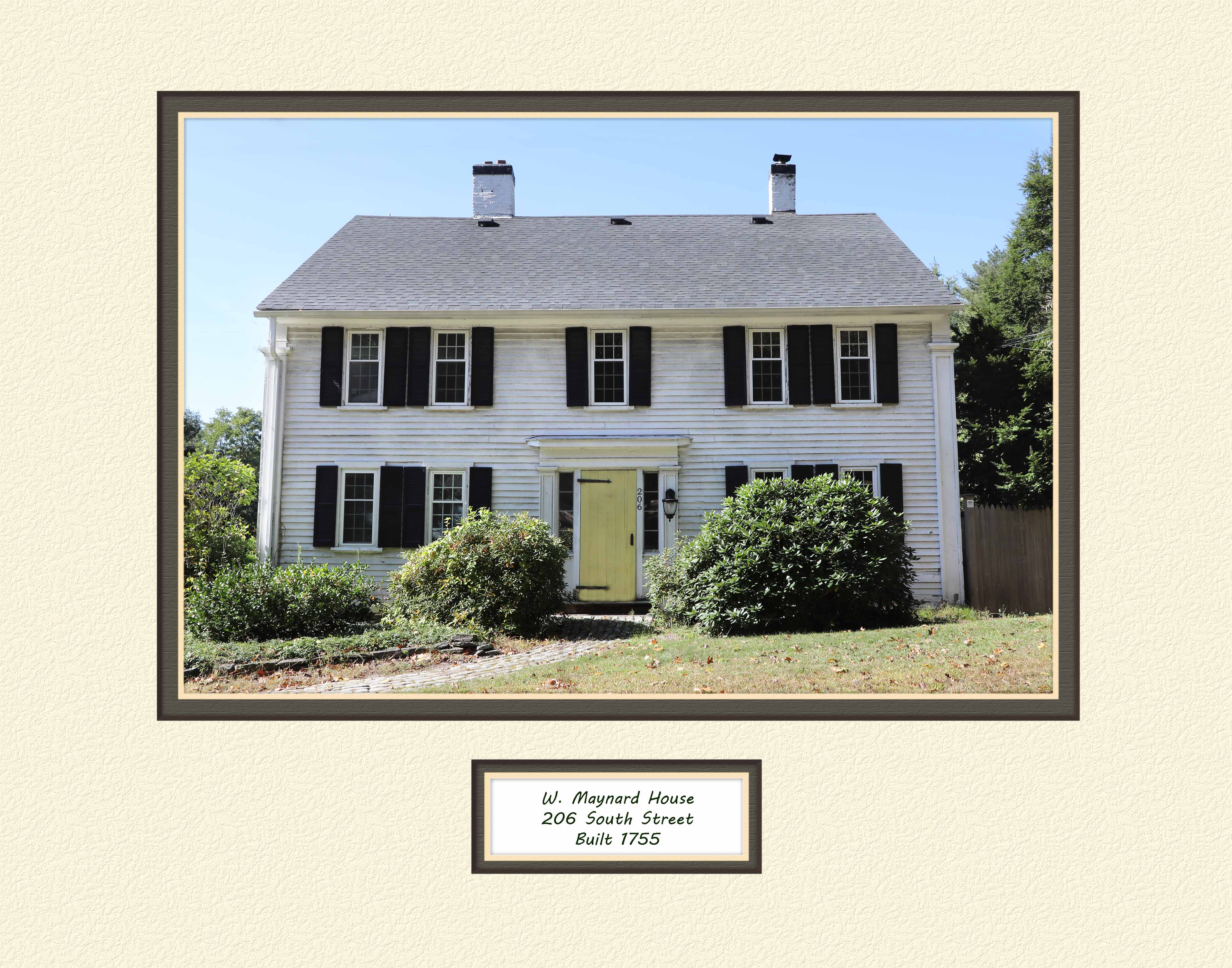 Town records indicate a construction date of 1755. By the 1830s, W. Maynard owned the property. The Maynard name was prevalent in Northborough's early history. By 1855, J. Leach was the owner.
Town records indicate a construction date of 1755. By the 1830s, W. Maynard owned the property. The Maynard name was prevalent in Northborough's early history. By 1855, J. Leach was the owner.
35 Whitney Street
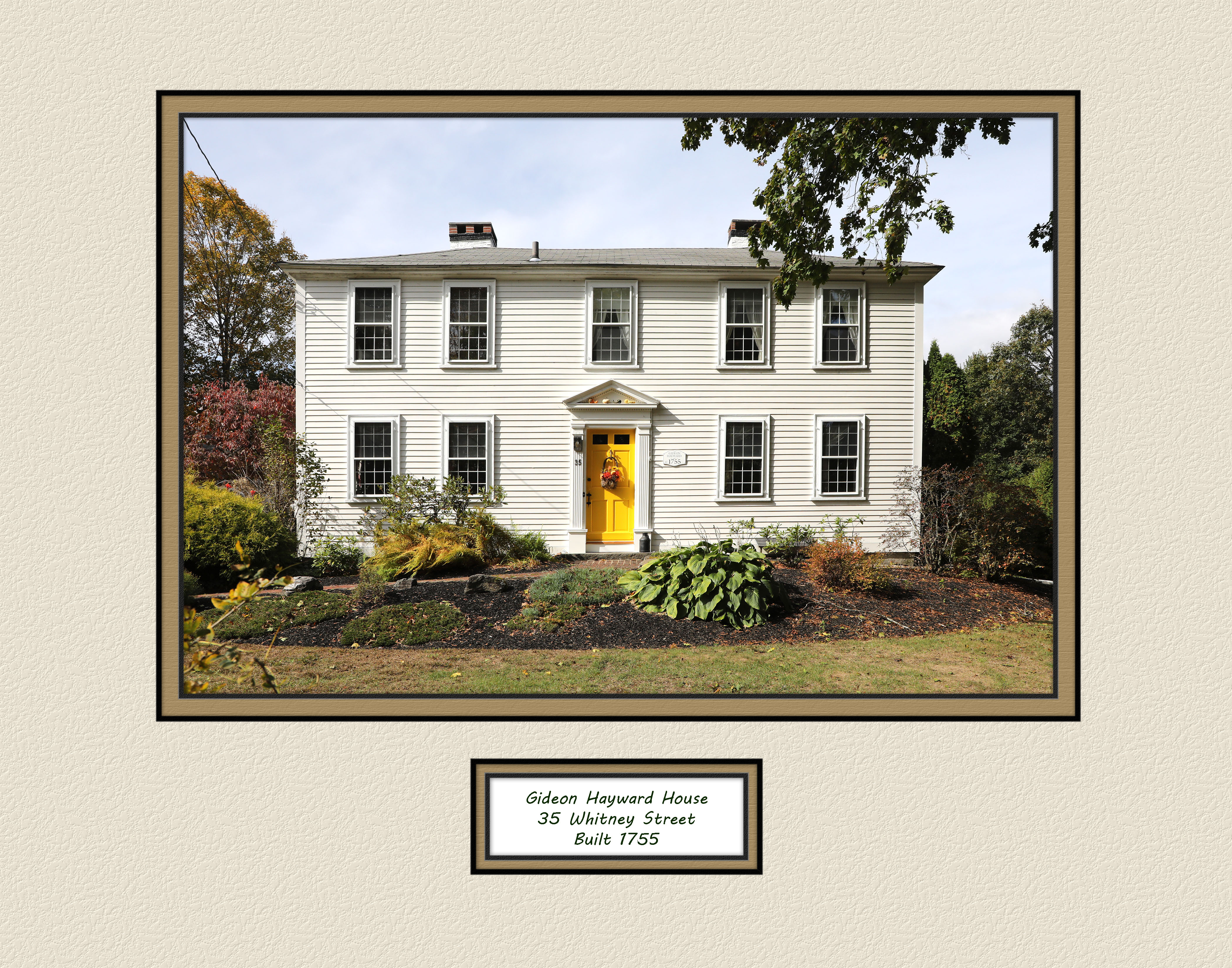 This house was built in stages, from a small farmhouse around 1755 and later expanded into a georgian-style home by 1810. Owned by notable town families, it was home to Gideon Hayward, a French-Indian war veteran and two of his sons who served in the Revolution. Later on Wilder Bush lived there and owned a comb factory across the street. He was influential in establishing the town bank and the railroad through town.
This house was built in stages, from a small farmhouse around 1755 and later expanded into a georgian-style home by 1810. Owned by notable town families, it was home to Gideon Hayward, a French-Indian war veteran and two of his sons who served in the Revolution. Later on Wilder Bush lived there and owned a comb factory across the street. He was influential in establishing the town bank and the railroad through town.
137 East Main Street
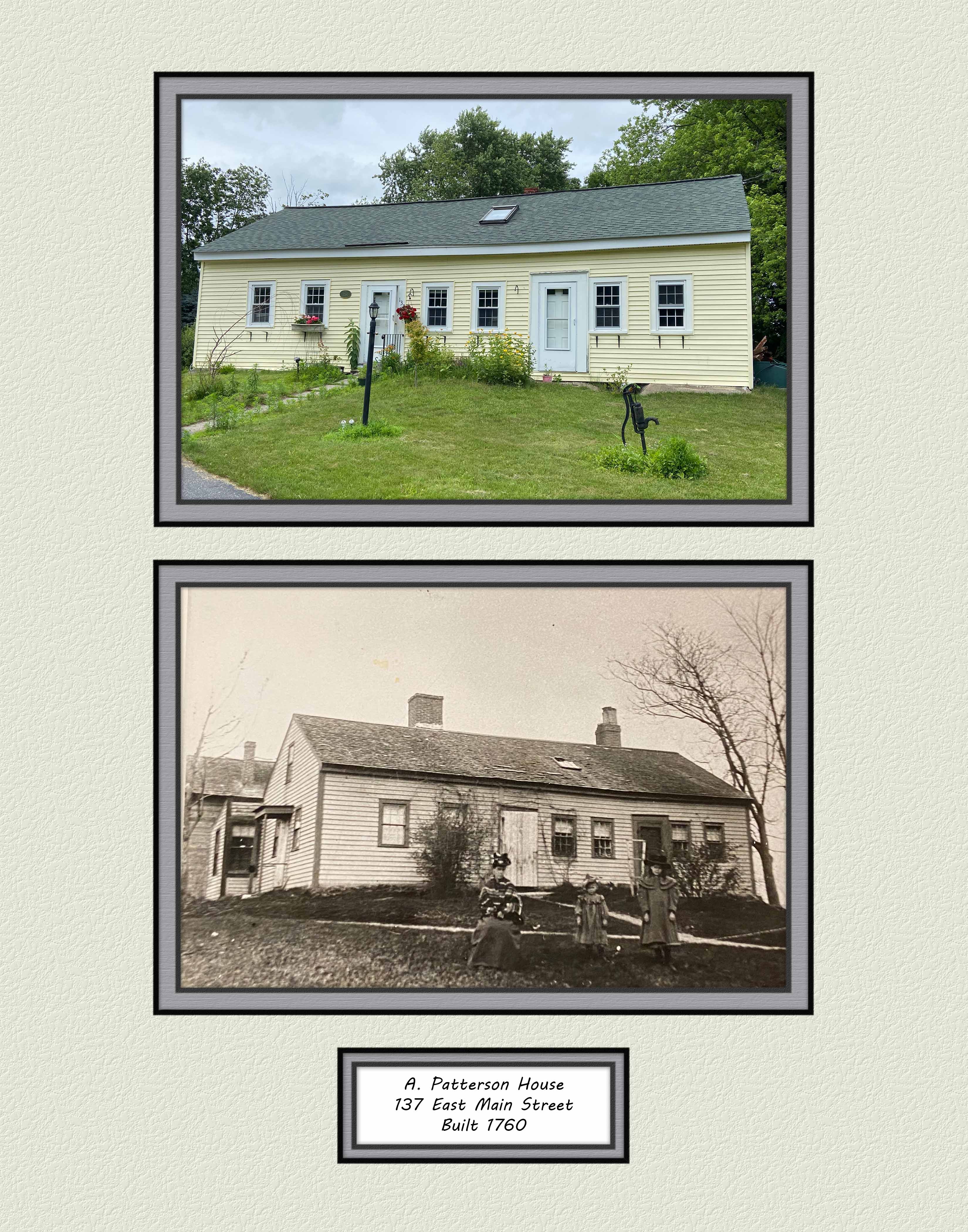 This house, built around 1760, was owned by A. Patterson according to the 1830 map. Remaining in the Patterson family through the 1870's, it was purchased in 1890 by George and Carolyn Lowe Collins who expanded the structure.
This house, built around 1760, was owned by A. Patterson according to the 1830 map. Remaining in the Patterson family through the 1870's, it was purchased in 1890 by George and Carolyn Lowe Collins who expanded the structure.
1 Mentzer Avenue
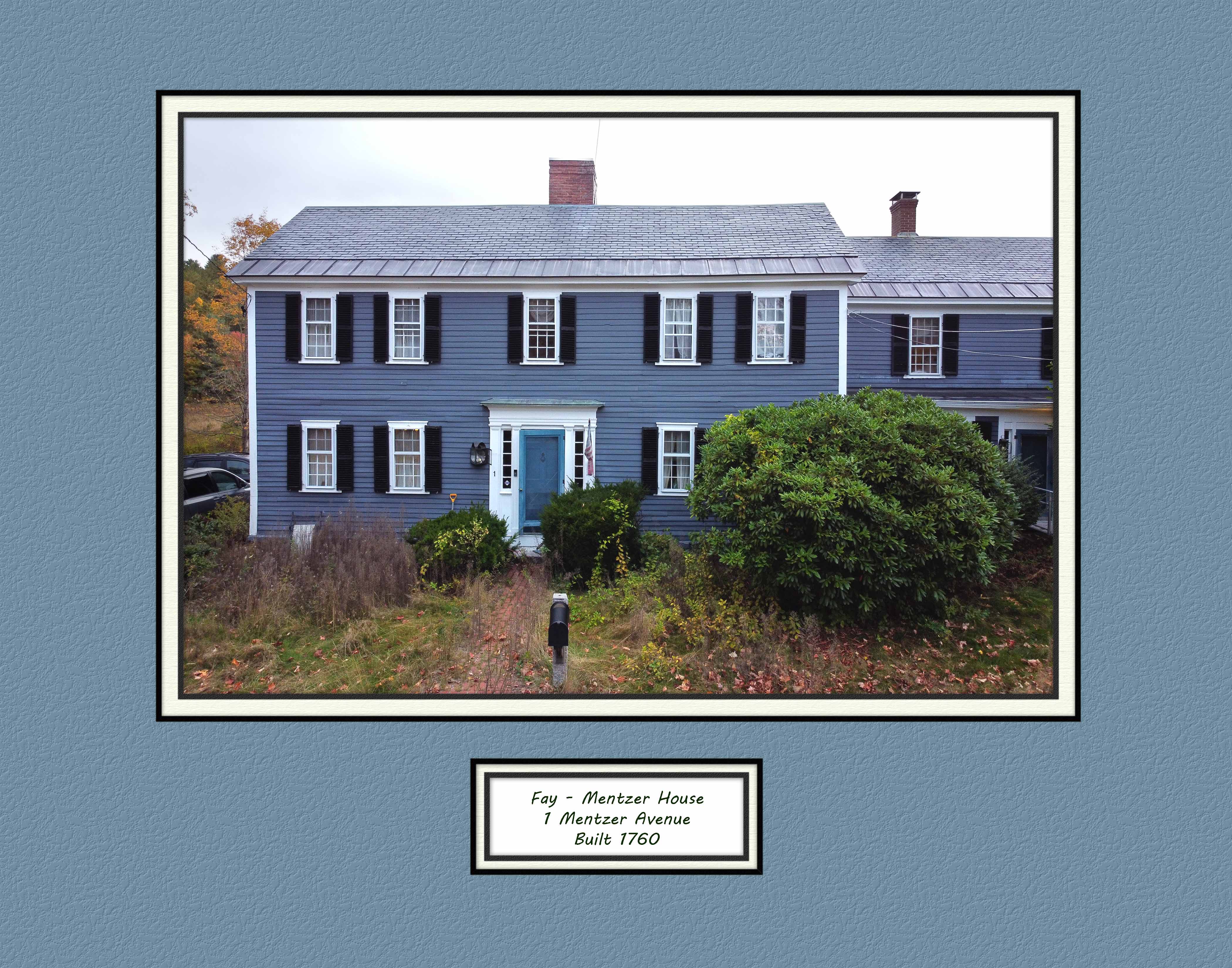 Built by Silas Fay in 1760, it remained in the Fay family until selling to Cyrus Mentzer, who was married to Mary Salome Fay. Mentzer operated a cider and vinegar mill there and retained ownership through the 1870s. The construction of I-290 divided the property.
Built by Silas Fay in 1760, it remained in the Fay family until selling to Cyrus Mentzer, who was married to Mary Salome Fay. Mentzer operated a cider and vinegar mill there and retained ownership through the 1870s. The construction of I-290 divided the property.
422 West Main Street
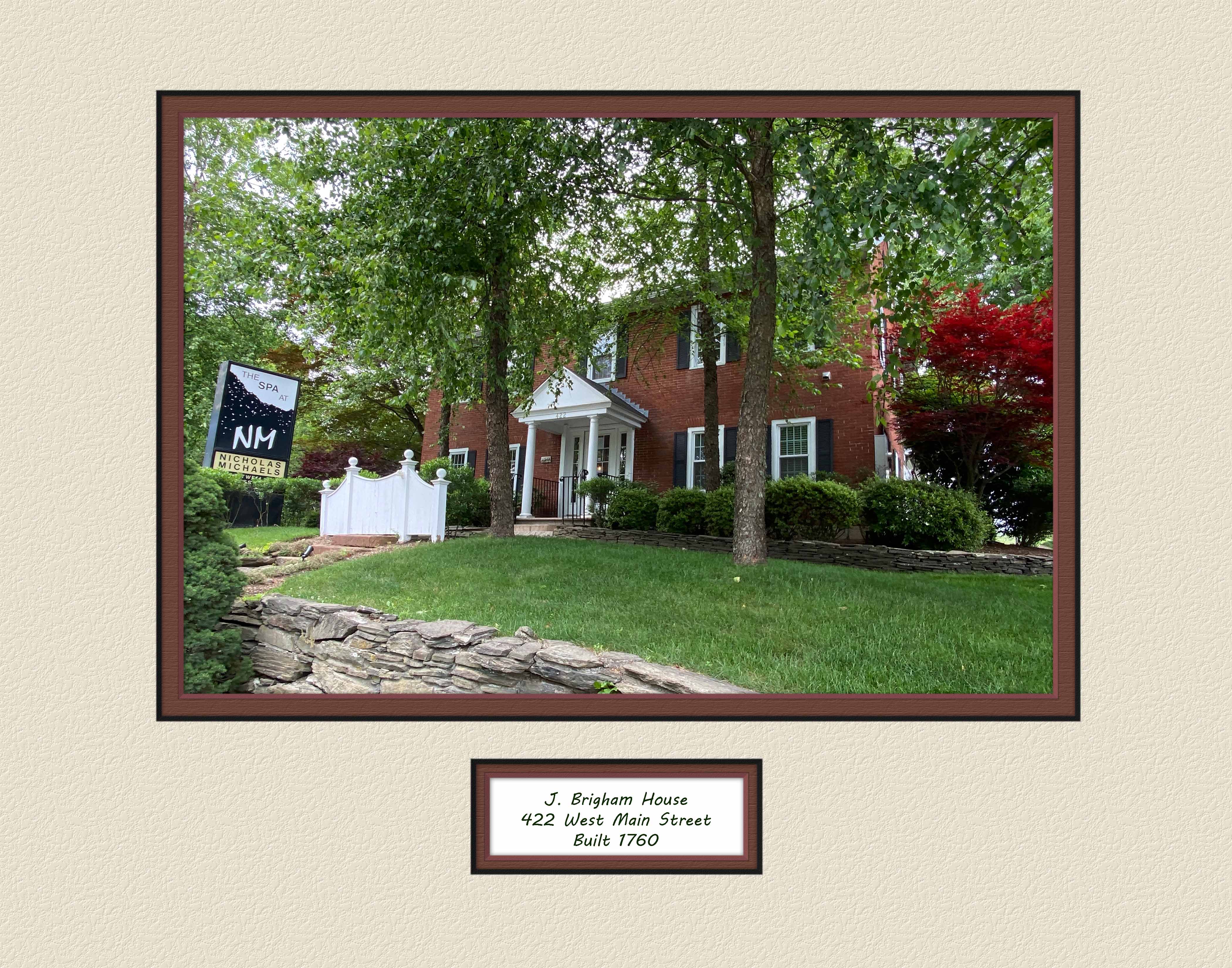 Built in 1760, the house was owned by J. Brigham. By 1885, J. Boyden had ownership, with the property being labeled as the "Northboro Bakery" on the atlas.
Built in 1760, the house was owned by J. Brigham. By 1885, J. Boyden had ownership, with the property being labeled as the "Northboro Bakery" on the atlas.
55 Winter Street
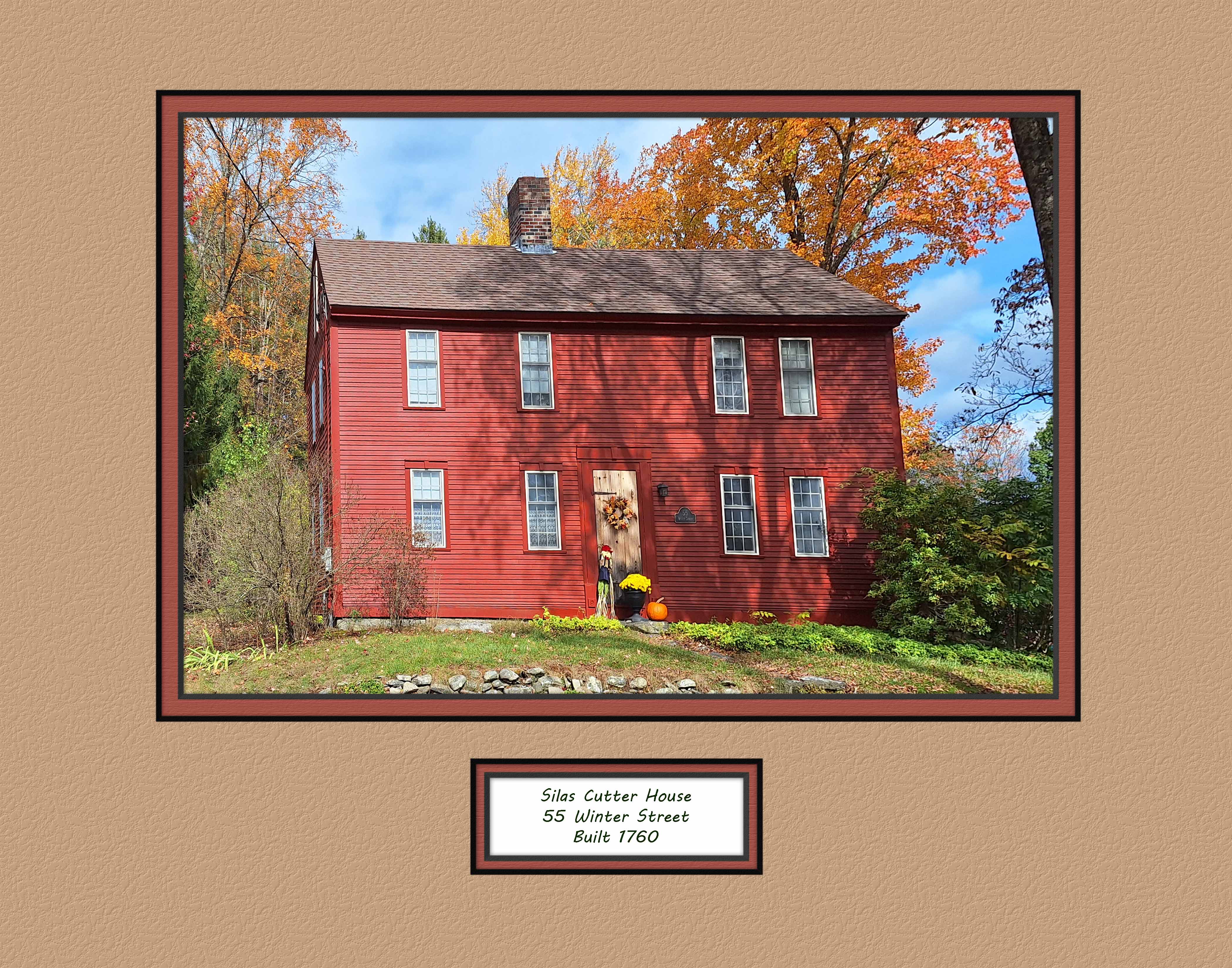 According to local tradition, this house was moved from Berlin in 1826 after being built in 1760. By 1855, it was owned by Silas A. Cutler, who served with Company E of the 32nd Regiment in the Civil War.
According to local tradition, this house was moved from Berlin in 1826 after being built in 1760. By 1855, it was owned by Silas A. Cutler, who served with Company E of the 32nd Regiment in the Civil War.
130 South Street
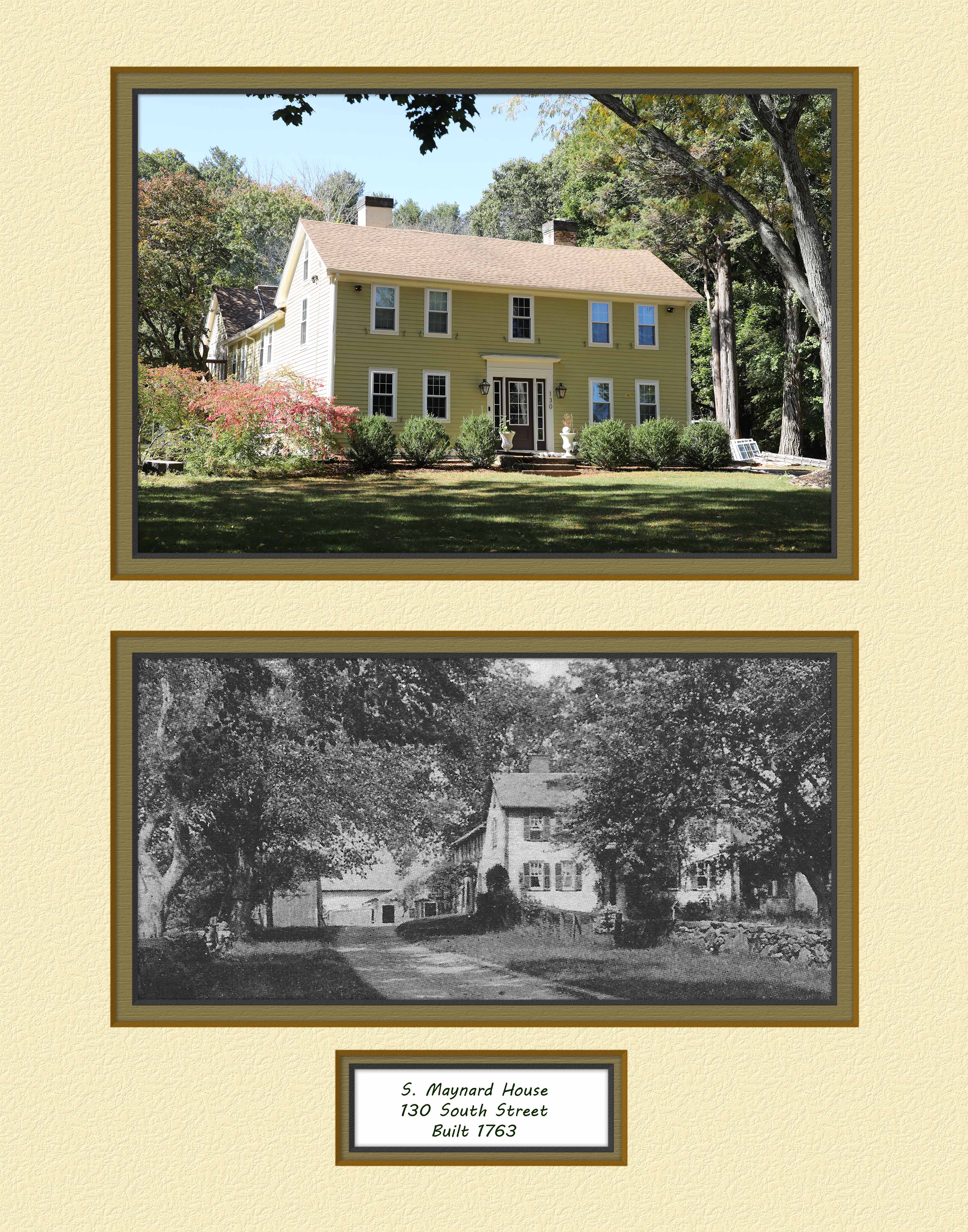 This house was built in 1763 and was the residence of Thaddeus Mason. Samuel and Amy Maynard resided here in the late 1800s. Samuel was a professor of horticulture at UMass until 1902. He was active in writing and serving the town. Amy, later as a widow, turned the house into a summer retreat for city folks, known as "The Homestead".
This house was built in 1763 and was the residence of Thaddeus Mason. Samuel and Amy Maynard resided here in the late 1800s. Samuel was a professor of horticulture at UMass until 1902. He was active in writing and serving the town. Amy, later as a widow, turned the house into a summer retreat for city folks, known as "The Homestead".
43 Main Street
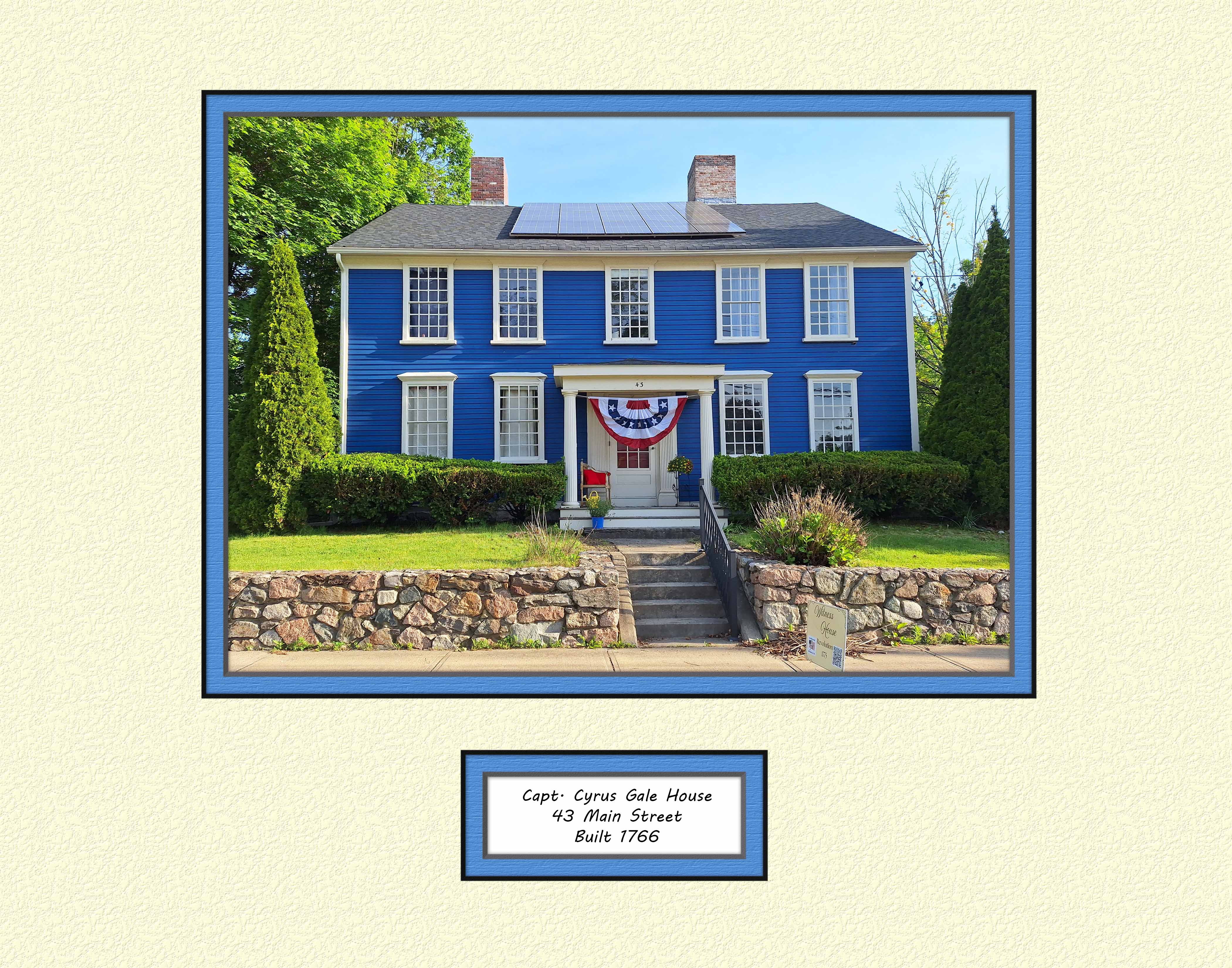 Built in 1766. Capt. Cyrus Gale bought this house in 1824 and built a General Store next door.
He was a founder of the Northborough Bank and of the Northborough Library.
Built in 1766. Capt. Cyrus Gale bought this house in 1824 and built a General Store next door.
He was a founder of the Northborough Bank and of the Northborough Library.
66 Green Street
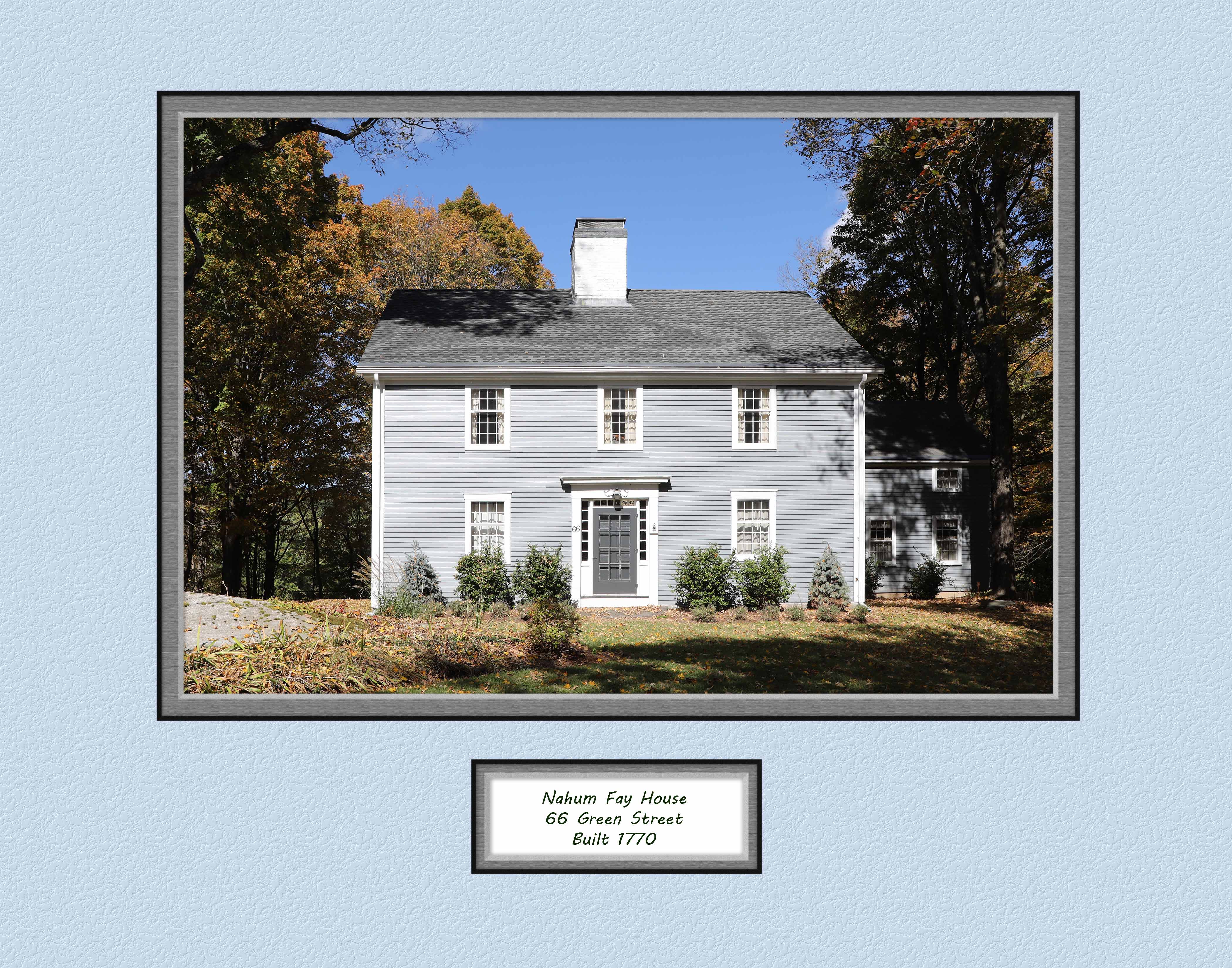 Built in 1770, it was owned by N. Fay, Esq. by 1830. He was grandson to Gershom Fay, early settler in 1702.
Built in 1770, it was owned by N. Fay, Esq. by 1830. He was grandson to Gershom Fay, early settler in 1702.
113 Whitney Street
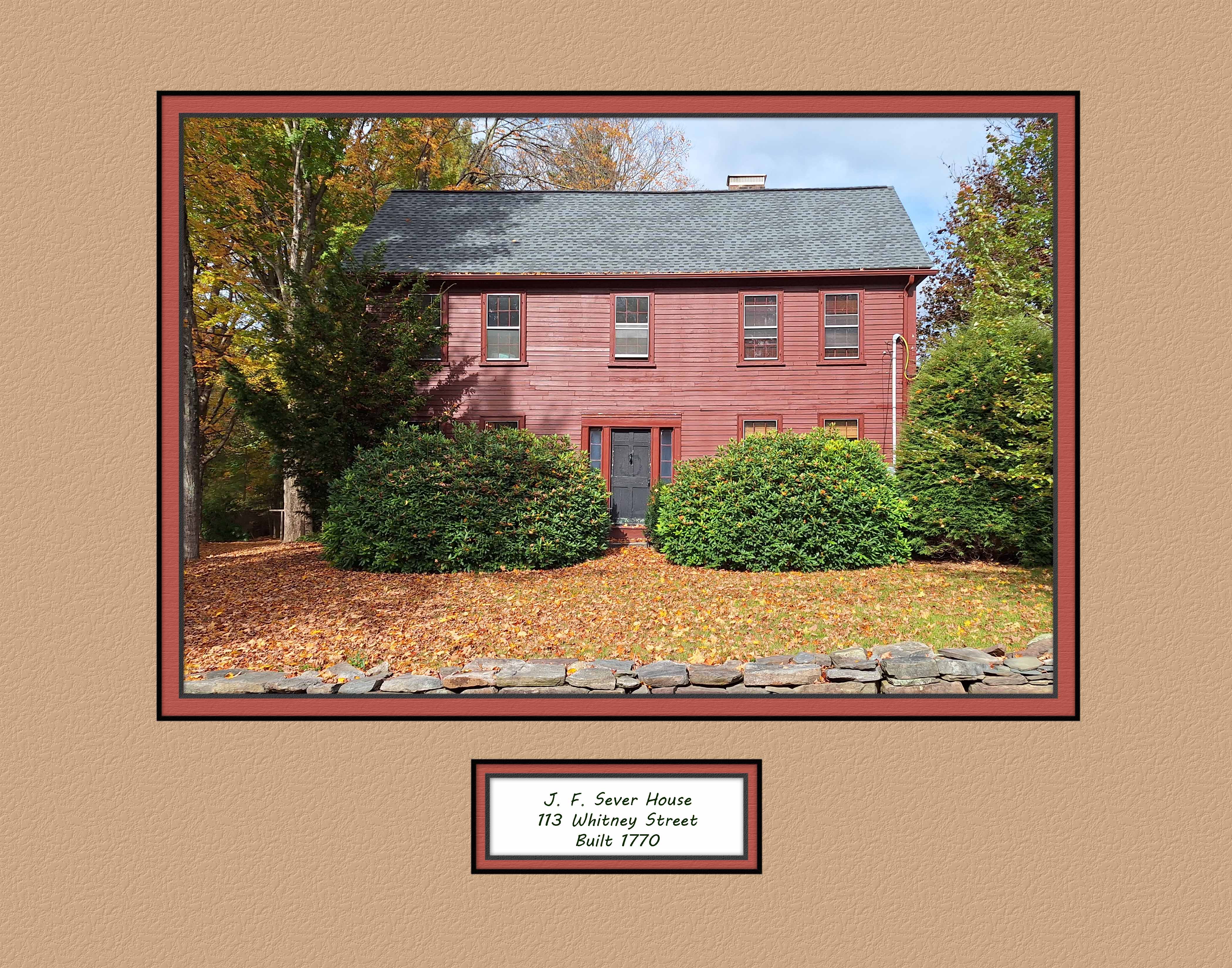 This 1770 house on Berlin Street, later called Whitney Street, was owned by J.F. Sever in 1830. Joseph Sever was a drummer in 1775 in the Revolutionary War.
This 1770 house on Berlin Street, later called Whitney Street, was owned by J.F. Sever in 1830. Joseph Sever was a drummer in 1775 in the Revolutionary War.
386 Davis Street
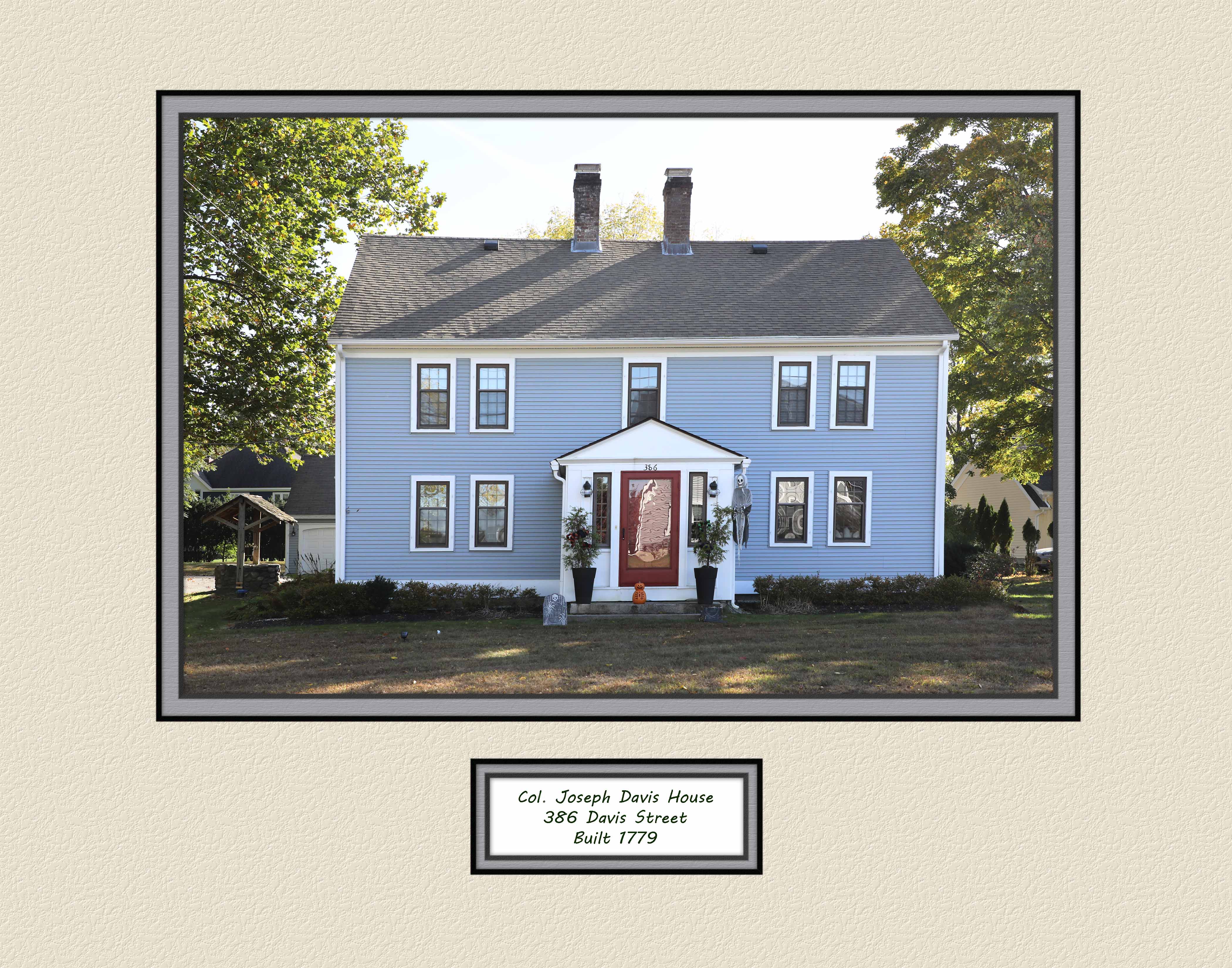 By 1830, Colonel Joseph Davis owned this house, built in 1779. Davis served the town as a representative to the General Court and as a senator. His son George C.Davis later owned this property.The Davis family had a profitable tannery business.
By 1830, Colonel Joseph Davis owned this house, built in 1779. Davis served the town as a representative to the General Court and as a senator. His son George C.Davis later owned this property.The Davis family had a profitable tannery business.
62 Whitney Street
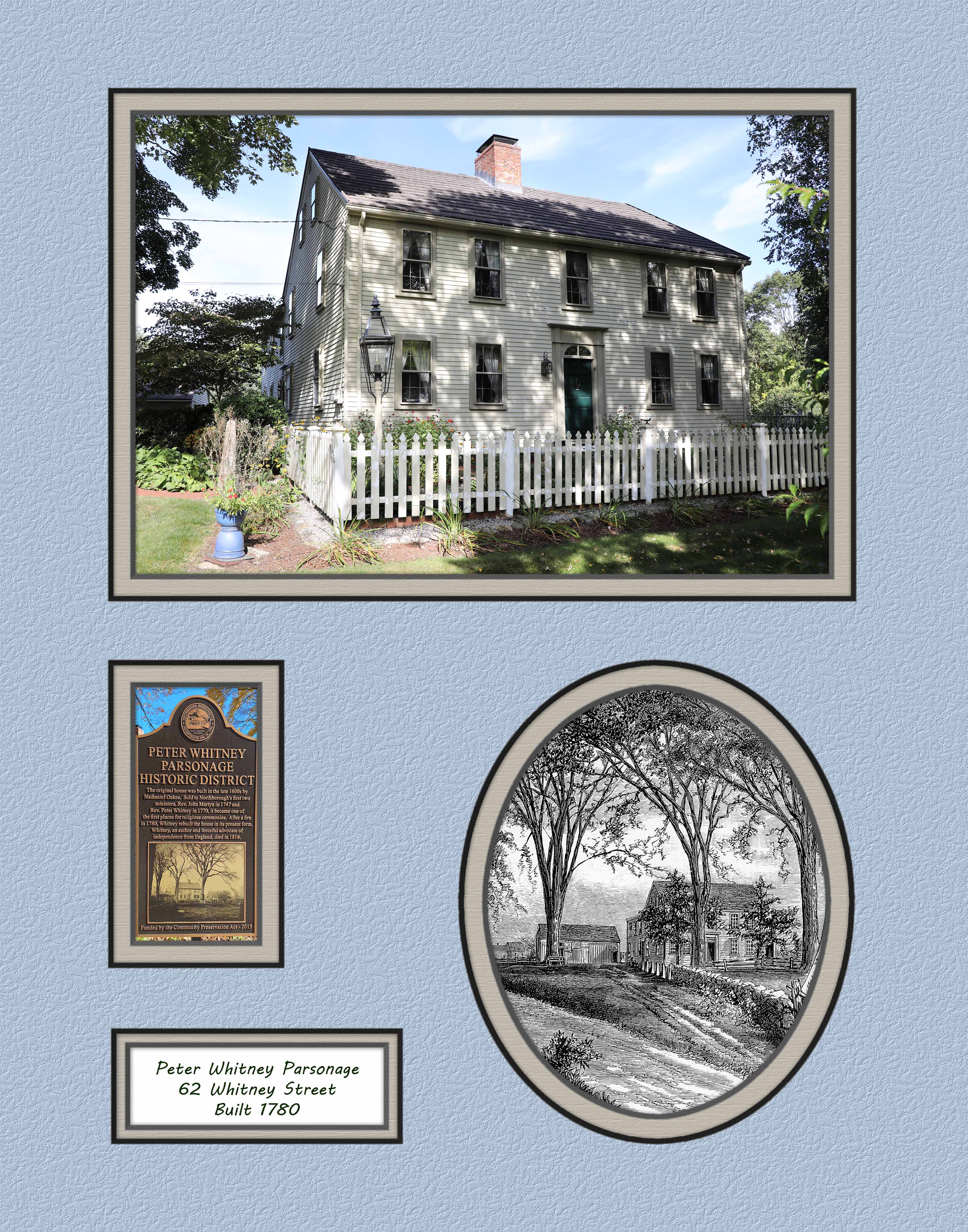 Here early religious services were held in 1741 with Rev. John Martyn, the first minister in town. Rev. Peter Whitney became the second minister and was a strong supporter of the Revolutionary cause.The house was rebuilt after a fire in 1780. It is now a single-building historic district.
Here early religious services were held in 1741 with Rev. John Martyn, the first minister in town. Rev. Peter Whitney became the second minister and was a strong supporter of the Revolutionary cause.The house was rebuilt after a fire in 1780. It is now a single-building historic district.


